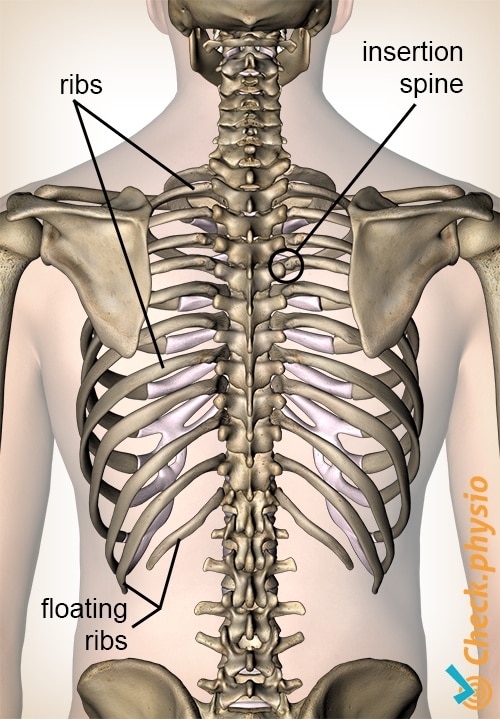Bruised or broken rib
Rib contusion / rib fracture
In most people, the skeleton consists of 24 ribs. The ribs have a protective role and are essential to the functioning of the lungs. Injuries to the ribs can result in severe pain during movement. Breathing may also be difficult or painful.

Specialists refer to the ribs as "costae". These are the bones that, together with the breastbone, form the rib cage. The rib cage protects the heart and lungs in the chest cavity and also facilitate breathing by creating negative pressure in the lungs.
Description of condition
We distinguish between bruised ribs and broken ribs. With a bruised rib (rib contusion), the tissue surrounding the rib is damaged. The term "bruised rib" is slightly confusing, as the rib itself is not affected. If a rib is affected and actually breaks, we refer to this as a rib fracture.
Cause and history
Injuries to the ribs usually occur following an accident, fall or knock to the rib cage. If a person has osteoporosis (thinning of the bones), a slight nudge or hard cough (or sneeze) can be enough to break a rib.
Signs & symptoms
- Pain at the side of the injury.
- Pressure on the rib(s) is painful (for example, also when lying down).
- Movements of the rib cage are painful (twisting, bending).
- (Sharp) pain when inhaling deeply.
- Pain when coughing.
- Sometimes breathing is difficult (shortness of breath, feeling of tightness).
- Bruises may be present.
With a broken rib, a deformity of the rib cage may be visible. A step can also be felt along the length of the rib. If there is any air under the skin (a crackling sensation under the skin), this might indicate a collapsed lung.
Diagnosis
Sometimes a broken rib will cause few symptoms. In many cases, it is difficult to determine whether a rib is fractured. X-rays can be taken if a fracture is suspected.
The diagnosis is confirmed using X-rays. A broken rib is often missed on an ordinary X-ray of the lungs. X-rays will also be examined for signs of a collapsed lung (pneumothorax). A CT scan or MRI may assist in determining the severity of the injury.
Treatment
In most cases, a bruised or broken rib will heal spontaneously. Analgesics may be prescribed for the pain and a primary care physician may also prescribe (codeine) tablets if the patient is coughing a lot. This suppresses the urge to cough.
If the patient is in a lot of pain, a large plaster dressing can be applied to reduce the breathing movements of the ribs under the plaster. In some cases an analgesic injection may be administered.
It is important for the patient to continue breathing deeply and fully expanding the lungs.
Exercises
You can check your symptoms using the online physiotherapy check or make an appointment with a physiotherapy practice in your locality.




